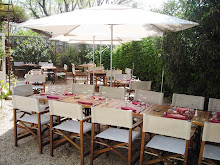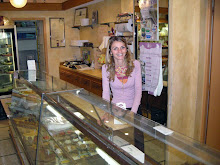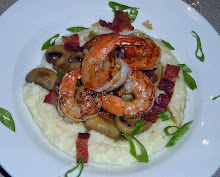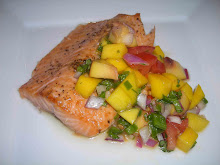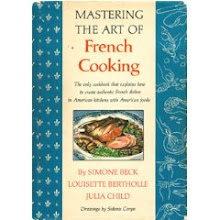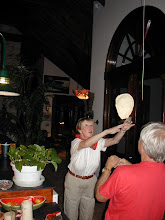It’s cherry time and I have a new recipe to add to my repertoire of cherry dishes – a main course salad of baby greens with fresh cherries, crumbled creamy gorgonzola cheese and grilled chicken, dressed with a raspberry walnut vinaigrette. Of course you could always exclude the chicken and make this a side salad to Ina’s roasted lemon chicken with homemade croutons, link to post & recipe here, which is what we are serving tonight for dinner guests.
The inspiration for this salad came from Better Homes and Garden’s Skinny One Dishes. They suggested bottled raspberry vinaigrette, which you know isn’t going to happen in this kitchen. I always make my own vinaigrettes and why not - it’s so easy to make your own and they come together in a matter of minutes. I’ve had luck finding raspberry vinegar at Italian markets and Amazon has a nice selection on line, link here.
The most daunting task with cherries is pitting them and I have a solution there too. A cherry pitter is one of my favorite kitchen gadgets and it also does a great job of pitting olives too. For years I had an old handheld pitter and after a while, my hand would start to hurt. Enter a gift from my brother-in-law – a brand new pitter that pits four cherries at a time with a swift one hand motion. It’s available at Sur la Table and happens to be on sale, link here. If you pit olives or cherries often, you owe it to yourself to have a pitter and I’m not a gadget person.
One quick tip about pitting and slicing cherries, especially light colored ones such as Rainier – don’t do it too far in advance or the edges of the cherries turn dark. I learned this from experience and I won’t make that mistake again.
Baby Greens with Fresh Cherries, Gorgonzola Cheese, & Chicken with Raspberry Vinaigrette
My Carolina Kitchen, Sam Hoffer – serves 4
Printable Recipe
4 cups baby greens
¾ cup fresh pitted and halved dark sweet fresh cherries
1 pound grilled or roasted chicken breasts, cut in half-strips, optional if you wish to make this a side salad
Maldon sea salt or other good quality sea salt, to taste
Freshly ground black pepper, to taste
¼ cup crumbled gorgonzola or blue cheese, or more to taste
Raspberry vinaigrette, recipe below
Combine baby greens, cherries, and chicken in a large salad bowl and toss well. Drizzle with the raspberry vinaigrette, then season with sea salt and freshly ground black pepper. Taste the salad and correct seasonings if necessary. Serve on individual plates or in shallow bowls, garnish with the crumbled cheese, and serve right away.
Cook’s note: If you are working with light colored cherries such as Rainier, pit and slice them at the last minute, otherwise they may darken around the edges.
Raspberry Vinaigrette
My Carolina Kitchen, Sam Hoffer – serves 4
Printable Recipe
4 tablespoons raspberry vinegar
4 tablespoons walnut oil or extra-virgin olive oil
Pinch of sea salt
Freshly ground black pepper to taste
2 teaspoons crème fraîche or good quality sour cream
Combine ingredients in a small jar with a tight fitting lid and shake well. Use right away or make ahead and store in the refrigerator for several days.
From the archives, here are three more of my favorite cherry recipes, just in time for cherry season.
Spicy fresh cherry salsa with peaches, served with sliced pork tenderloin, link to post and recipe here.
Boozy cherries with lavender, an easy version of Cherries Jubilee, served over toast or vanilla ice cream, link to post and recipe here.
And another salad, this time with Rainier cherries, creamy goat cheese and crunchy pistachios over greens, link to post and recipe here.
This will be shared with Foodie Friday at Rattlebridge Farm, Miz Helen’s Country Kitchen Full Plate Thursday, and Foodie Friday at Simple Recipes.
Have a great weekend everyone.





























